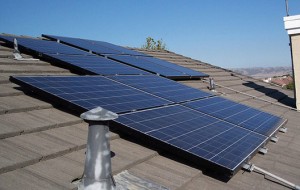The successful reform of Chilean electricity sector, in the first half of the 1980s, led to vertical and horizontal unbundling of generation, transmission and distribution; and large-scale privatization.
The electricity sector was based on thermal and hydroelectric power generation.
After natural gas cuts from Argentina, in 2007 Chile began construction of its first liquefied natural gas regasification plant in Quintero to ensure supply.
In addition, new hydroelectric and coal plants were built.
However, renewable energies development achieved in recent years is really important.
10% of the total energy matrix was of renewable energy in 2015. Only five years earlier, the figure was 1.47%.
In July 2015 the electricity generation was 6,163 GWh, 617 GWh attributable to renewable energy (14% solar).
As if this were not enough, between 2015 and 2017 Chile will double its current renewable generating capacity with 2.4 GW of projects in execution (the current renewable installed capacity is 2.2 GW), surpassing its target for 2025 of 20% of clean energy generation.
The Roadmap notes that in 2050 at least 70% of the energy matrix must come from renewable sources, focusing on solar and wind energy and complemented by new hydroelectric developments.
Projections indicate that by 2030 the renewable contribution could reach between 35% and 40%.
The Chilean government gave permission to build the world’s largest solar energy storage plant in the northern region of Atacama, which will provide 260 MW to the central grid.
Copiapo Solar, with an investment of U$D 2,000, incorporates a hybrid system of concentration towers equipped with molten salt thermal storage in combination with photovoltaic solar modules and begin operating in 2019.

The other side of the coin is the lack of a more concrete and proactive stance in relation to distributed generation and solar thermal solutions that have a positive and direct impact on the welfare of the community and SMEs, in addition to democratize the energy sector.
The most worrying situation is for solar thermal industry with little development since, in December 2013, the law that gave momentum ceased to exist.
Concerning solar photovoltaic small generation development, the expected Law 20,571 into force since October 2014, which allows small generators (less than 100 KW) to pour their surplus generation to the grid, did not have the expected results.
At mid-2015 there were only one connection finalized and 202 were pending.
The country wants to be solar leader and does not encourage its widespread use. It sounds contradictory.
This is because Chile is still focused on the electricity sector old model, which consists of large power plants and classical transmission and distribution needs associated.
We sense that modern power sector model is based on three pillars: energy efficiency, distributed generation and renewable energy.

The great potential of small-scale solar technologies are not yet taking advantage because more powerful incentives are needed to accelerate its development.
Soft loans for individuals and small businesses and a more attractive Net metering system could generate a huge impact and make Chile a self-generation leader.
Regarding the business sector, solar photovoltaic has dominance over thermal. Most companies are small and usually not exclusively dedicated to solar energy business.
